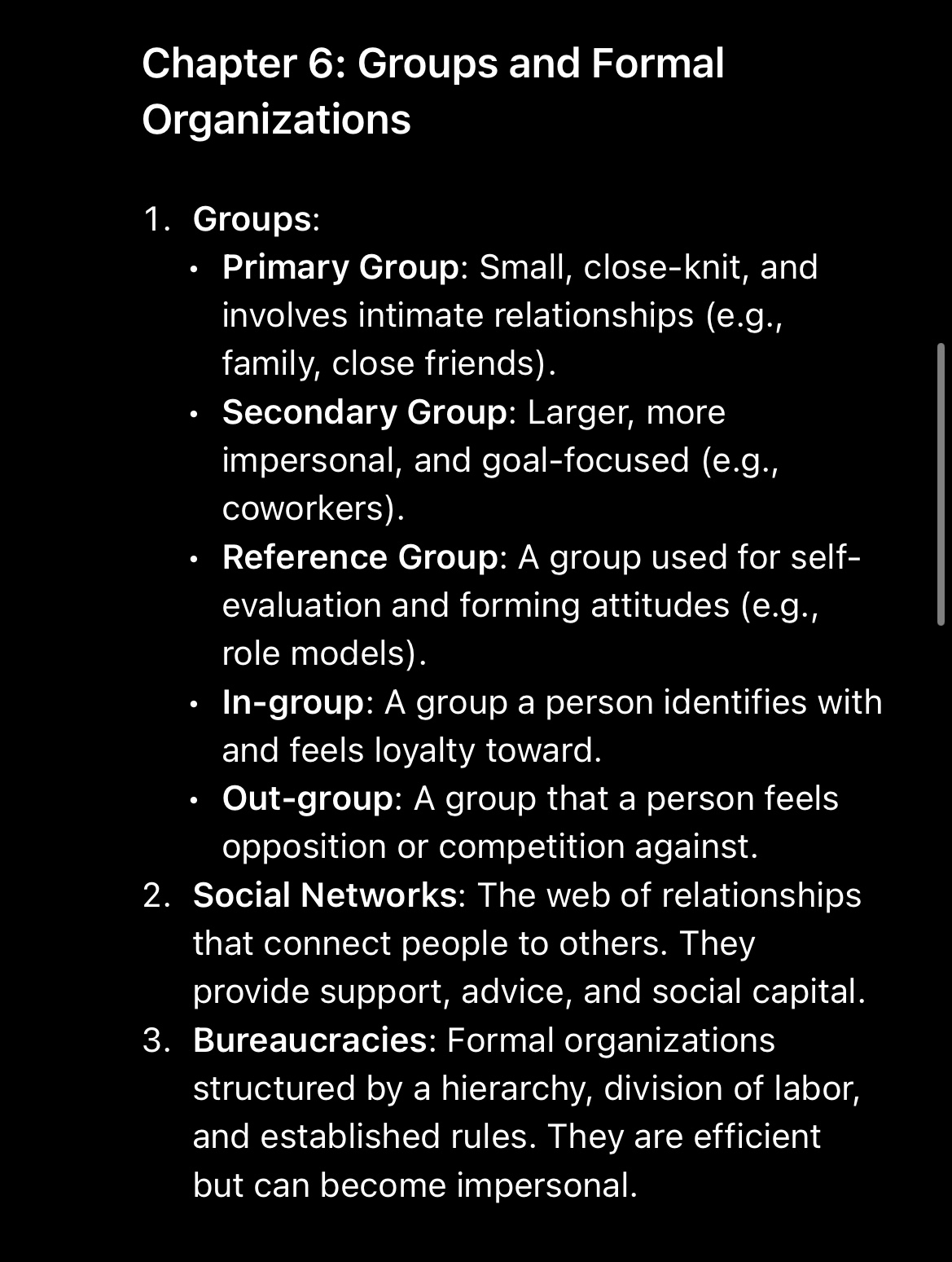What are the definitions and characteristics of primary groups, secondary groups, reference groups, in-groups, out-groups, social networks, and bureaucracies?

Understand the Problem
The question is asking for an overview or definitions of different types of groups and organizations as outlined in Chapter 6. It highlights various categories of groups, their characteristics, and the nature of social networks and bureaucracies.
Answer
Definitions: - **Primary Group**: Intimate relationships; close-knit. - **Secondary Group**: Larger, impersonal; task-focused. - **Reference Group**: Self-evaluation; influence attitudes. - **In-group**: Identified with; loyal. - **Out-group**: Opposed to; competitive. - **Social Networks**: Connect people; provide support. - **Bureaucracies**: Formal, hierarchical organizations.
The final answer is provided for each terminology:
- Primary Group: Small, close-knit with intimate relationships (e.g., family, close friends).
- Secondary Group: Larger, impersonal, and goal-focused (e.g., coworkers).
- Reference Group: Used for self-evaluation and forming attitudes (e.g., role models).
- In-group: A group one identifies with and feels loyalty toward.
- Out-group: A group one feels opposition or competition against.
- Social Networks: Web of relationships connecting people, providing support, advice, and social capital.
- Bureaucracies: Formal organizations with hierarchy, division of labor, and established rules; efficient but potentially impersonal.
Answer for screen readers
The final answer is provided for each terminology:
- Primary Group: Small, close-knit with intimate relationships (e.g., family, close friends).
- Secondary Group: Larger, impersonal, and goal-focused (e.g., coworkers).
- Reference Group: Used for self-evaluation and forming attitudes (e.g., role models).
- In-group: A group one identifies with and feels loyalty toward.
- Out-group: A group one feels opposition or competition against.
- Social Networks: Web of relationships connecting people, providing support, advice, and social capital.
- Bureaucracies: Formal organizations with hierarchy, division of labor, and established rules; efficient but potentially impersonal.
More Information
These definitions highlight the differences and functions of social groups, showcasing how they influence individual identity and social dynamics.
Tips
Mistakes include confusing group types or overlooking the emotional dynamics in primary groups versus the task-oriented nature of secondary ones.
Sources
- 6.1: Types of Social Groups - Social Sci LibreTexts - socialsci.libretexts.org
- Groups and Organizations – Local to Global: The Sociological Journey - pressbooks.pub
- Chapter 6: Groups and Organizations - saylordotorg.github.io
AI-generated content may contain errors. Please verify critical information